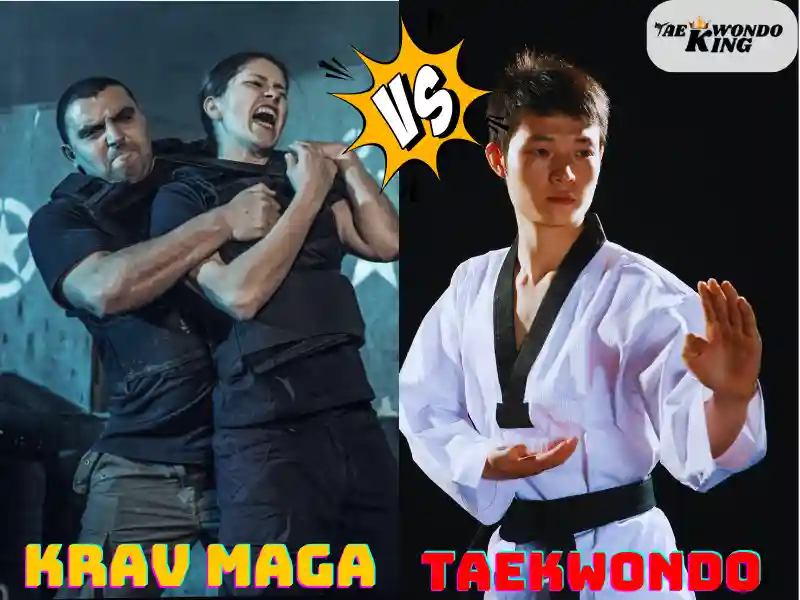
I’ve had students come to me torn between Krav Maga or TKD, wondering which one really works when life gets messy. I get it, I’ve trained in both, and they couldn’t be more different. Taekwondo feels like art in motion, while Krav Maga is raw and direct, like a street brawl with purpose.
In this article, I’ll break down what each style offers, when it shines, and how to pick what fits you best. Let’s unpack the truth behind the kicks and the grit.
See the latest Adidas Taekwondo Ballet Shoes price on Amazon.

History and Overview
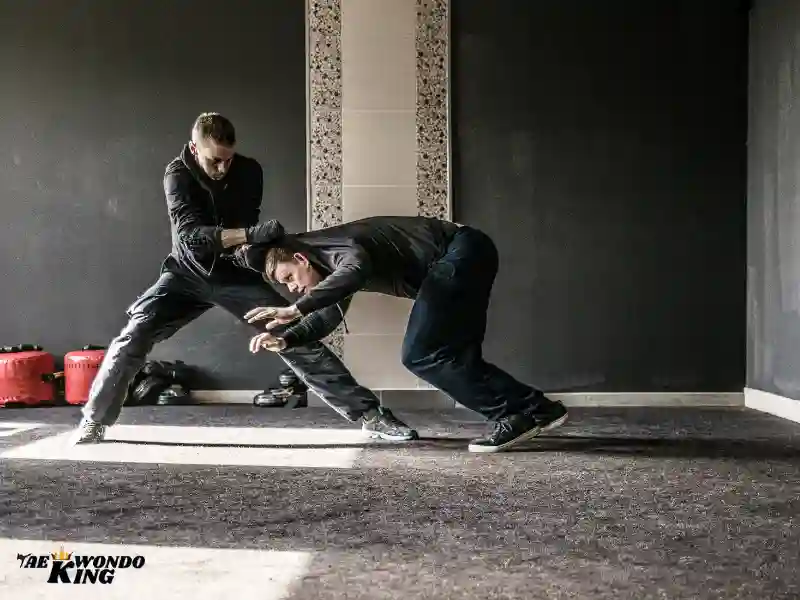
Krav Maga and TKD, or Taekwondo, are both martial arts that have gained popularity around the world. Krav Maga, developed in the 1930s, is a self-defense system that originated in Israel. It was created to quickly and effectively neutralize threats in real-life situations. TKD, on the other hand, is a Korean martial art that emphasizes kicks and strikes. It has a long history, with roots dating back to ancient times.
Krav Maga focuses on practical techniques that can be used by anyone, regardless of their size or strength. Its techniques are based on natural movements, making it easier for practitioners to learn and apply in real-life scenarios. In Krav Maga, the goal is to end a confrontation as quickly as possible by targeting vulnerable areas of the body, such as the eyes, throat, and groin.
TKD is known for its powerful kicks and dynamic movements. It emphasizes agility, flexibility, and speed. Practitioners of TKD train to develop strong and precise kicks, as well as punches and blocks. It also incorporates a variety of spinning and jumping kicks, making it a visually impressive martial art.
Both Krav Maga and TKD place a strong emphasis on discipline, respect, and self-control. They provide practitioners with physical fitness, self-confidence, and the ability to defend themselves if necessary. However, they differ in their approach and techniques.
Techniques
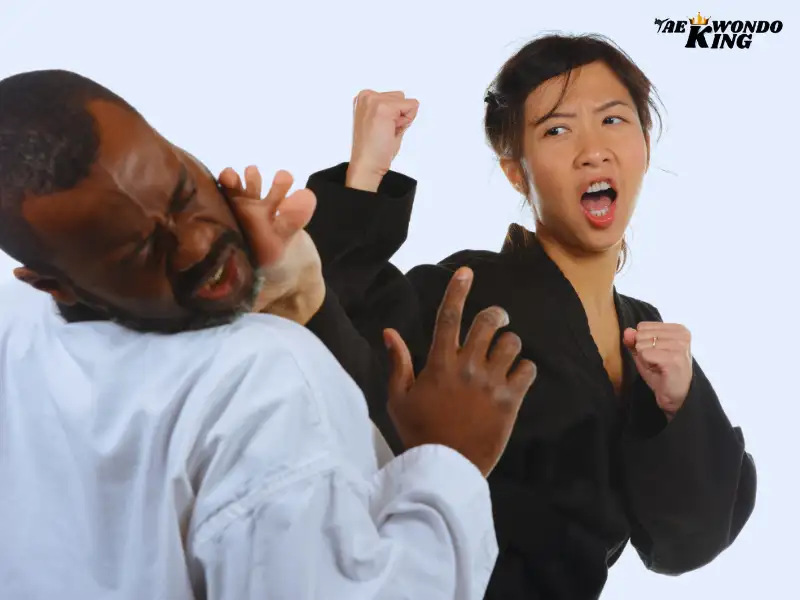
While both Krav Maga and TKD have their strengths and applications, their approaches to self-defense differ greatly. Krav Maga aims to neutralize threats quickly and efficiently, focusing on practical techniques that can be used in real-world situations. TKD, on the other hand, focuses on physical and mental development through disciplined training and the mastery of complex movements.
Krav Maga incorporates a wide range of techniques from various martial arts, including striking, grappling, and ground fighting. It also emphasizes practical techniques for defending against common attacks. TKD is known for its high, fast kicks and dynamic footwork. It also includes hand strikes and basic grappling techniques, but kicks are the primary focus. Consider your personal preferences and physical abilities when deciding which techniques appeal to you.
Krav Maga and TKD are both martial arts with their unique features and benefits. Krav Maga focuses on practical self-defense techniques, while TKD emphasizes kicks and strikes. Both martial arts provide physical fitness and self-confidence, making them popular choices for individuals looking to learn self-defense and improve their overall well-being.
See the latest Adidas Taekwondo Ballet Shoes price on Amazon.

Training and Intensity
The training and intensity differences between Krav Maga and TKD highlight the underlying philosophies and goals of each martial art. While both require dedication and hard work, Krav Maga focuses on practical self-defense skills in real-life situations, while TKD emphasizes kicking techniques and physical conditioning. Ultimately, the choice between the two depends on individual preferences, goals, and the type of training experience one seeks.
If you’re looking to learn a new martial art but can’t decide between Krav Maga and Taekwondo, this article will help you make an informed decision based on your goals and preferences. Two popular choices are Krav Maga and Taekwondo (TKD). Both martial arts have their unique techniques and styles, so it’s important to understand the differences before making a decision. So, let’s see inside and find out which martial arts suit your needs and goals.
In terms of intensity, Krav Maga tends to have a more realistic and intense training environment, as its main goal is to prepare students for real-life self-defense situations. The training often includes high-intensity drills, scenario-based simulations, and stress-induced training to simulate real-world encounters. TKD, on the other hand, may focus more on developing strength, flexibility, and agility through repetitive practice of techniques and patterns.
Benefits of Practicing Krav Maga and TKD
Practicing Krav Maga and TKD (Taekwondo) offers numerous benefits for individuals. Firstly, both martial arts disciplines provide an effective form of self-defense. Krav Maga, which originated in Israel, focuses on practical techniques for real-life situations, teaching students how to defend themselves against common attacks such as grabs, strikes, and chokes. TKD, on the other hand, emphasizes high kicks and fast footwork, enabling practitioners to protect themselves from opponents.
In addition to self-defense skills, both Krav Maga and TKD promote physical fitness and mental discipline. Regular practice of these martial arts disciplines helps improve cardiovascular endurance, strength, flexibility, and coordination. These physical benefits contribute to overall health and well-being, reducing the risk of chronic diseases and improving one’s quality of life.
Krav Maga and TKD foster mental discipline and focus. The training requires concentration, discipline, and perseverance, which can help individuals develop mental resilience and improve their ability to handle stress and adversity. By constantly challenging themselves and pushing through difficult training sessions, practitioners of these martial arts develop a strong mindset that can be applied to other areas of life.
Both Krav Maga and TKD offer opportunities for personal growth and self-confidence. As students progress through the ranks and master new techniques, they gain a sense of achievement and self-assurance. The supportive and encouraging environment of martial arts classes also helps individuals build social connections and develop a sense of belonging to a community.
See the latest Adidas Taekwondo Ballet Shoes price on Amazon.

Risks of Practicing Krav Maga and TKD
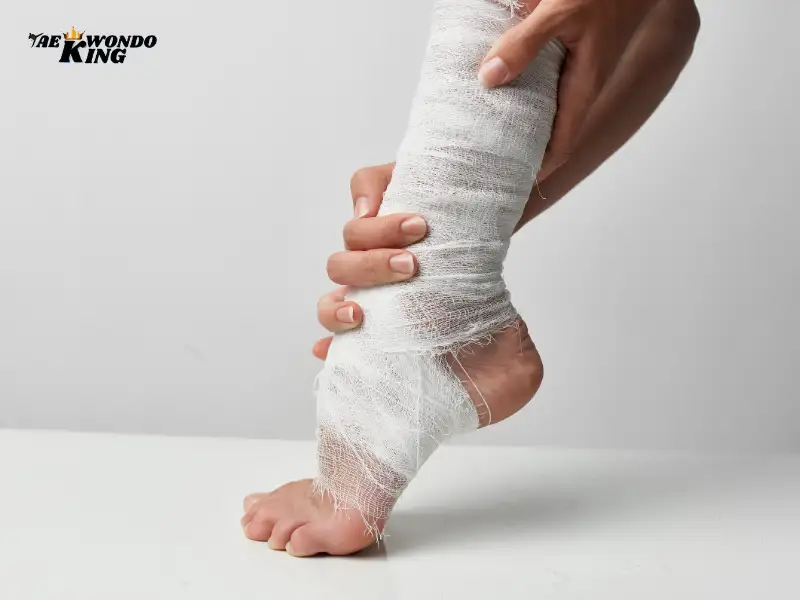
Practicing martial arts such as Krav Maga and Taekwondo can come with certain risks and potential dangers. These martial arts involve intense physical movements, strikes, and kicks that can lead to injuries if not performed correctly or without proper supervision. For example, in Krav Maga, which focuses on self-defense techniques, participants learn to use their bodies as weapons, which can result in accidental injuries if not executed with caution.
Martial arts training often involves sparring or practicing techniques with a partner, increasing the risk of collision or unintended strikes. Without proper protective gear or supervision, participants may suffer injuries such as sprains, bruises, or even broken bones.
Both Krav Maga and Taekwondo require a high level of physical fitness and stamina. Pushing oneself beyond their limits or attempting advanced techniques without adequate training can lead to overexertion, muscle strains, or other physical injuries.
To mitigate these risks, it is crucial to train under the guidance of a qualified instructor who can provide proper technique instruction, emphasize safety protocols, and ensure participants are using the appropriate protective gear. Participants should listen to their bodies, pacing themselves and gradually increasing their intensity and difficulty levels over time.
Philosophy and Mindset
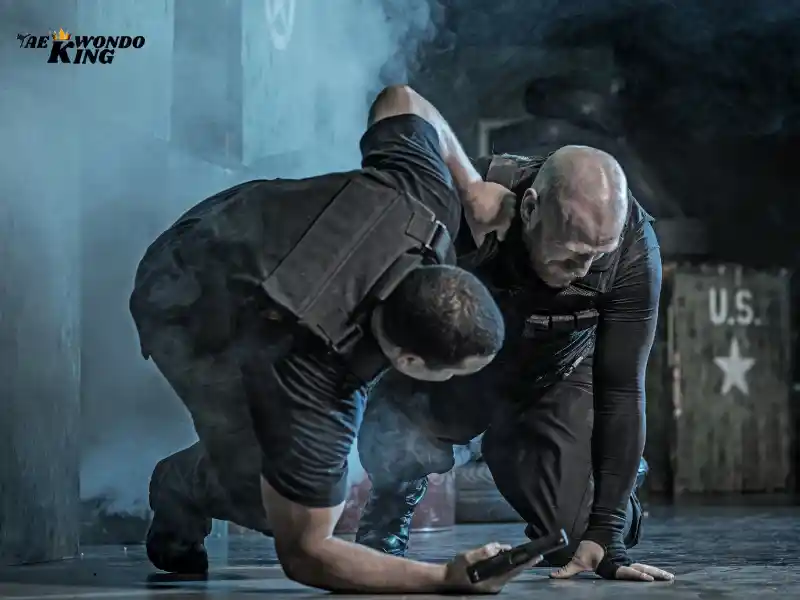
Krav Maga emphasizes a no-nonsense approach to self-defense and survival. It focuses on aggression, efficiency, and doing whatever it takes to protect yourself. TKD emphasizes self-discipline, respect, and personal growth. Consider your mindset and what you hope to gain from your martial arts training when making a decision.
Ultimately, the choice between Krav Maga and TKD depends on your goals, preferences, and physical abilities. Consider trying out classes or speaking with instructors to get a better sense of each martial art style and atmosphere. Remember, the most important thing is to choose a martial art that you enjoy and feel motivated to continue practicing.
Taekwondo can be an excellent choice if you’re looking for a well-rounded martial art that encompasses physical fitness, character development, and competitive opportunities. Ultimately, both arts have their unique strengths, and your decision should align with your objectives in the world of martial arts.
Taekwondo vs Krav Maga who would win?
It is difficult to determine a clear winner when it comes to Taekwondo versus Krav Maga. Both styles of martial arts have their strengths and weaknesses. Taekwondo is a striking martial art that focuses on kicks, punches, and blocks. Krav Maga is a self-defense system that relies on efficient and simple techniques for attacking and defending.
Ultimately, the outcome of a fight between an experienced Taekwondo practitioner and an experienced Krav Maga fighter will depend on which martial art the practitioner is more proficient in and comfortable with. Depending on the individual’s level of skill and experience, either Taekwondo or Krav Maga could prevail.
See the latest Adidas Taekwondo Ballet Shoes price on Amazon.

Taekwondo vs Krav Maga which is better?
Deciding which martial art to pursue can be difficult. Taekwondo is a striking-based martial art that emphasizes discipline and respect, but its defensive techniques may not be as effective as other martial arts. Krav Maga is a self-defense system that focuses on quickly and efficiently neutralizing threats. It might not be as flashy as Taekwondo, but it can be an effective technique if you need to defend yourself. Ultimately, the choice of which martial art to pursue depends on what you are looking for and what best meets your needs.
Can you use Krav Maga in a fight?
Krav Maga is a martial art that is used for self-defense and fighting. It is a combination of various martial arts and street-fighting techniques that are designed to be effective in a fight. Krav Maga utilizes strikes, wrestles, chokes, and locks to defend against an attacker, as well as quick and efficient techniques to disarm and disable an attacker. It should only be used in situations where you are in danger and is not intended to be used as a sport or form of entertainment.
Can Krav Maga be self-taught?
Krav Maga is a self-defense system developed in Israel that provides a comprehensive set of techniques, principles, and tactics for effectively responding to any type of violent attack. While some of the techniques can be learned from books and videos, it is best to learn Krav Maga through hands-on experience in a certified school.
Learning the proper techniques and developing the reflexes for the situation is essential before attempting to use Krav Maga in a real-world situation. Although it is possible to learn Krav Maga on your own, it is highly recommended to take classes from a professional instructor to ensure that you are learning the techniques correctly and developing the necessary reflexes.
How to achieve a black belt in Krav Maga?
To achieve a black belt in Krav Maga, you must follow a structured training program and dedicate yourself to consistent practice and improvement. Here are some steps to help you on your journey:
1. Find a reputable Krav Maga school or instructor who can guide you through the different belt levels and provide proper training.
2. Start with the basics and focus on mastering the fundamental techniques, such as strikes, kicks, defenses, and combatives.
3. Attend regular classes and practice outside of class to improve your skills and conditioning.
4. Progress through the belt levels by demonstrating proficiency in the required techniques, knowledge, and physical fitness standards.
5. Stay committed to continuous learning and improvement, always seeking feedback from your instructor and working on your weaknesses.
6. Participate in sparring sessions and realistic scenarios to apply your skills dynamically and practically.
7. Study the principles and philosophies of Krav Maga to develop a deeper understanding of the system.
8. As you advance, consider assisting with teaching or mentoring other students to further enhance your knowledge and skills.
9. Eventually, after years of dedicated training and meeting the requirements, you can aim to test for your black belt under the supervision of your instructor or through an official Krav Maga organization.
Remember, achieving a black belt in Krav Maga requires time, effort, and perseverance. It is a journey that involves continuous learning and growth both physically and mentally.
See the latest Adidas Taekwondo Ballet Shoes price on Amazon.

How to achieve a black belt in Taekwondo?
To achieve a black belt in Taekwondo, you need to follow these steps:
1. Find a reputable Taekwondo school or instructor and enroll in classes.
2. Attend classes regularly and practice consistently. Taekwondo requires discipline and dedication.
3. Learn and master the basic techniques, forms (poomsae), and self-defense moves.
4. Progress through the different belt levels, starting from the white belt and advancing through various color belts.
5. Each belt level has specific requirements and tests. Train hard and prepare well for each test.
6. Demonstrate proficiency in sparring (fighting) and breaking techniques.
7. Develop your physical fitness, including strength, flexibility, and endurance.
8. Show good sportsmanship, respect, and discipline both in and out of the training environment.
9. As you approach the black belt level, undergo a comprehensive test that includes all aspects of Taekwondo.
10. Once you pass the test, you will be awarded your black belt. However, remember that achieving a black belt is just the beginning of your journey in Taekwondo. Continuous learning and improvement are essential to becoming a skilled practitioner.
How to achieve a high level of skill in Krav Maga?
To achieve a high level of skill in Krav Maga, it is important to follow these steps:
1. Find a reputable and qualified Krav Maga instructor or training center. Look for instructors who are certified by recognized Krav Maga organizations.
2. Attend regular training sessions and practice consistently. Regular practice is essential to develop muscle memory and improve technique. Aim for at least two to three training sessions per week.
3. Focus on mastering the basic techniques and principles of Krav Maga. This includes strikes, kicks, defenses, and counterattacks. Building a strong foundation is crucial before moving on to more advanced techniques.
4. Push yourself to train in realistic and high-pressure scenarios. Krav Maga emphasizes real-life self-defense situations, so it is important to train in scenarios that simulate these situations. This will help develop quick reflexes and decision-making skills.
5. Cross-train in other martial arts or combat sports. Supplementing your Krav Maga training with other disciplines such as boxing, Muay Thai, or Brazilian Jiu-Jitsu can enhance your overall skills and adaptability.
6. Maintain physical fitness and conditioning. Krav Maga requires strength, endurance, and agility. Regularly engage in cardiovascular exercise, strength training, and flexibility exercises to improve your overall physical fitness.
7. Stay committed and patient. Achieving a high level of skill in Krav Maga takes time and dedication. Stay consistent with your training and don’t get discouraged by setbacks. Continuous improvement comes with perseverance and patience.
How to achieve self-defense skills in Krav Maga?
To achieve self-defense skills in Krav Maga, it is recommended to find a qualified instructor or training center that specializes in this martial art. Regular practice and consistency are key to developing and improving skills. It is important to focus on learning and mastering the basic techniques, such as strikes, kicks, and blocks, before moving on to more advanced moves.
Additionally, conditioning and fitness training can help improve strength, agility, and endurance, which are all beneficial for self-defense. Practice situational awareness and learn how to assess potential threats and respond effectively. Remember to always prioritize safety and practice in a controlled environment under the guidance of a qualified instructor.
How to achieve a high level of skill in Taekwondo?
To achieve a high level of skill in Taekwondo, it is important to focus on the following key aspects:
1. Regular Training: Consistent and frequent training is crucial to improve your skills. Practice various techniques, forms, and sparring drills to develop muscle memory and improve your overall performance.
2. Discipline and Dedication: Taekwondo requires discipline and dedication. Set specific goals and work towards them diligently. Stay committed to your training schedule and push yourself to improve with each session.
3. Strong Basics: Master the fundamental techniques and stances of Taekwondo. Build a solid foundation by focusing on proper form, balance, and technique execution. Regularly practice basic kicks, punches, blocks, and footwork to refine your skills.
4. Conditioning and Fitness: Taekwondo demands physical fitness and endurance. Incorporate strength training, cardio exercises, and flexibility drills into your training routine. A strong and conditioned body will enhance your performance and reduce the risk of injuries.
5. Mental Focus: Develop mental strength and concentration. Taekwondo involves quick decision-making, strategic moves, and mental agility. Practice meditation, visualization, and mindfulness techniques to improve your focus and mental clarity during training and competitions.
6. Compete and Seek Feedback: Participate in tournaments and competitions to gain experience and test your skills against other practitioners. Seeking feedback from experienced instructors and fellow practitioners will help you identify areas for improvement and refine your techniques.
7. Learn from Experienced Instructors: Find a reputable Taekwondo school or instructor who can guide you through your journey. Experienced instructors can provide proper guidance, correct your form, and offer valuable insights to help you progress.
Remember, achieving a high level of skill in Taekwondo requires time, patience, and consistent effort. Stay motivated, stay dedicated, and never stop learning and improving.
See the latest Adidas Taekwondo Ballet Shoes price on Amazon.

How to achieve flexibility in Taekwondo?
To achieve flexibility in Taekwondo, you can incorporate various stretching exercises into your training routine. Some effective stretches include:
1. Static stretches: Hold a stretch position for 15-30 seconds, targeting specific muscle groups like hamstrings, quadriceps, and hip flexors.
2. Dynamic stretches: Perform controlled movements that mimic the actions of Taekwondo kicks and strikes, gradually increasing the range of motion.
3. PNF stretching: This technique involves a combination of stretching and contracting muscles. It can be done with a partner or using resistance bands to enhance flexibility.
4. Regular Stretching: Incorporate stretching exercises into your daily routine. Focus on stretching all major muscle groups, including your legs, hips, back, and shoulders.
5. Active stretching: Perform stretches while actively engaging the muscles being stretched. This can be done through techniques like leg swings, arm circles, and torso rotations.
6. Gradual Progression: Be patient and gradually increase the intensity and duration of your stretching exercises. Push your limits gradually to avoid injury.
Remember to warm up before stretching and never push yourself too hard or bounce during stretches, as it can lead to injury. Consistency and regular practice are key to improving flexibility in Taekwondo.
How to achieve success in Krav Maga competitions?
To achieve success in Krav Maga competitions, here are some tips:
1. Train regularly: Consistent training is crucial to improve your skills, reflexes, and overall performance.
2. Master the basics: Focus on mastering the fundamental techniques and movements of Krav Maga. Strong foundation skills will give you an advantage in competitions.
3. Develop physical fitness: Krav Maga competitions require endurance, strength, speed, and agility. Incorporate conditioning exercises and cardio workouts into your training routine.
4. Practice drills and sparring: Regularly participate in drills and sparring sessions to simulate real competition scenarios and improve your reactions under pressure.
5. Focus on technique and precision: Pay attention to proper technique execution and precision rather than trying to overpower opponents. Clean and effective techniques will score you more points.
6. Study your opponents: Analyze the fighting style, strengths, and weaknesses of your opponents. This knowledge can help you develop effective strategies and tactics.
7. Mental preparation: Develop mental toughness, focus, and confidence. Visualize success and mentally rehearse your techniques and strategies.
8. Compete regularly: Gain experience by participating in local, regional, and national competitions. Learn from each competition and use the feedback to improve your skills.
9. Seek professional guidance: Consider training under experienced coaches or instructors who can provide guidance and feedback, and help you refine your skills.
Remember, success in Krav Maga competitions comes with dedication, hard work, and continuous improvement.
See the latest Adidas Taekwondo Ballet Shoes price on Amazon.

Krav Maga vs Taekwondo
Choosing the right martial art can be tough, especially with so many options available. Krav Maga and TKD are two popular choices, but which one is right for you? In this article, we will compare and contrast the two martial arts to help you make an informed decision. Whether you’re looking for self-defense skills or want to improve your fitness, we’ve got you covered. Here are some factors to consider when choosing between Krav Maga and TKD:
Taekwondo and Krav Maga are both effective martial arts with their unique strengths. Krav Maga emphasizes practical self-defense techniques that are quick and effective in real-life situations, focusing on aggression and simultaneous defense and attack. Taekwondo, on the other hand, is a traditional martial art that emphasizes powerful and precise kicks and strikes, as well as training in forms, sparring, and self-discipline. Ultimately, the choice between the two depends on personal preference and goals.
Is there fighting in Taekwondo?
Yes, there is indeed fighting in Taekwondo. It is a martial art that focuses on kicking and striking techniques, and it is commonly practiced as a combat sport. In tournaments and competitions, practitioners participate in sparring matches to demonstrate their skills and score points against their opponents. These matches aim to showcase skill, speed, and accuracy in executing techniques while also displaying sportsmanship and respect for one’s opponent.
Is Krav Maga similar to Taekwondo?
Krav Maga and Taekwondo are both martial arts, but they have different origins and focuses. Krav Maga was developed as a self-defense system for the Israeli military, with an emphasis on practical techniques for real-life situations.
Taekwondo is a traditional Korean martial art that focuses on kicking and striking techniques, with an emphasis on self-discipline and personal growth. While both can be effective forms of self-defense, they have different approaches and philosophies.
Krav Maga or TKD? Which Martial art is right for you?
When deciding between Krav Maga and TKD, it’s important to consider your personal goals and preferences. Krav Maga is known for practical, real-world self-defense techniques, while TKD focuses more on traditional martial arts and sports. If you’re looking for a self-defense-focused practice, Krav Maga may be the better choice for you.
However, if you’re interested in the discipline and competition aspect of martial arts, TKD might be the right fit. It’s important to research and try out both styles to see which one resonates with you.
How do I choose the right Martial Art?
When deciding on a martial art that suits you, it’s crucial to think about your individual goals and preferences. Krav Maga is recognized for its emphasis on real-world self-defense, whereas Taekwondo prioritizes discipline, physical fitness, and traditional techniques. Take into account what you want to achieve from a martial art and give a few different classes a try to see which one fits best with your objectives and interests.
See the latest Adidas Taekwondo Ballet Shoes price on Amazon.

FAQ
Is Krav Maga better than Kalaripayattu?
Comparing Krav Maga and Kalaripayattu can be tricky since they both bring different advantages. Krav Maga is centered on realistic self-defense techniques, while Kalaripayattu is an old martial art that encompasses both physical and mental exercises. Ultimately, which one is ideal for you will depend on your objectives and preferences.
Should I learn Krav Maga or Karate?
It depends on your goals. Krav Maga is a system of self-defense that emphasizes practical, real-world techniques. Karate is a martial art focused on physical and mental discipline, self-defense, and traditional martial arts techniques. Both styles have their benefits, so it’s important to do your research and decide which one is best for you.
Krav Maga vs Muay Thai: Who is best?
Both Krav Maga and Muay Thai are popular martial arts styles with their unique strengths and weaknesses. It depends on your personal goals and preferences as to which is best for you. If you are looking for self-defense, Krav Maga could be a better option. If you’re more interested in a technical, sport-oriented martial art, Muay Thai might be a better choice.
Krav Maga vs Karate, which is better?
Krav Maga and Karate are both effective martial arts for self-defense. However, they have different approaches. Krav Maga is a modern combat system developed in Israel and focuses on quick and practical self-defense. Karate is a traditional Japanese martial art that emphasizes physical and mental discipline. The best style for any individual will depend on their self-defense goals and the time and effort they are willing to put into training.
Krav Maga vs Jiu Jitsu: Who would win?
Krav Maga and Jiu Jitsu are both martial arts with their distinct styles and techniques. While both styles teach practitioners how to defend and counter-attack, they have different strategies and techniques. Krav Maga is a reality-based self-defense system that focuses on aggressive, rapid movements to take down an opponent as quickly as possible.
Jiu-Jitsu, on the other hand, is more centered on grappling and submission techniques that are used to tire out an opponent. Due to the differences between the two, it is hard to say which one would win in a fight. It all depends on the skill level of the practitioners and the context of the fight.
Krav Maga vs Line
Line and Krav Maga are both martial arts practices with many similarities but also some key differences. Krav Maga is an Israeli self-defense system that emphasizes the use of body movements such as kicks, punches and throws to defeat an opponent. Line, on the other hand, is a Japanese martial art that uses more traditional methods such as blocks, counters, and throws. Both martial arts practices emphasize the use of body movements and quick decision-making.
However, the main difference between Krav Maga and Line is that Krav Maga focuses more on the physical aspect of combat, while Line focuses more on the mental aspect. Krav Maga is more effective in situations where you need to act quickly and deal with an immediate threat. Line, on the other hand, is more effective in situations where you need to analyze a situation and take your time to make a decision. In conclusion, both martial arts have their own set of advantages and disadvantages, and the decision of which one to choose should be based on your specific needs.
Should I learn Wing Chun or Krav Maga?
When deciding between Wing Chun and Krav Maga, it’s important to consider your personal goals and preferences. Wing Chun is a traditional Chinese martial art focused on close-range combat and self-defense techniques. At the same time, Krav Maga is a modern self-defense system developed for the Israeli military.
Consider factors such as your fitness level, the availability of classes in your area, and which style aligns best with your objectives. Ultimately, your best choice will depend on your needs and interests.
Should I do Krav Maga or Kickboxing?
It depends on your personal preferences and fitness goals. Krav Maga is a self-defense system that focuses on real-world situations and is often used by law enforcement and military personnel. Kickboxing, on the other hand, is a high-intensity workout that combines martial arts and boxing techniques.
Consider what you want to achieve – self-defense skills or a high-energy workout – and choose the discipline that best aligns with your goals. It’s also a good idea to try a class or two of each to see which one you enjoy more.
See the latest Adidas Taekwondo Ballet Shoes price on Amazon.


Founder, Owner, and CEO of TaekwondoKing.
He is one of the top 100 martial artists in the World and among the top 20 referees in Bangladesh.
Ehatasamul Alom is an esteemed Kukkiwon Certified Taekwondo 3rd Dan Black Belt with over 15 years of experience in this dynamic martial art. Born in Rajshahi, Bangladesh, Ehatasamul’s journey with Taekwondo began at the tender age of seven. His passion led him to compete at national and international levels, where he has bagged numerous awards and honors. He is also a member of the Taekwondo National Referee Panel.
With a Bachelor’s degree in Sports Science from the prestigious Rajshahi University, Ehatasamul has a deep understanding of the technical and scientific aspects of martial arts and some other martial arts.
In 2022, Ehatasamul created the “TaekwondoKing.com” to share his knowledge, Free Resources, Values, and Real experiences. His articles focus on Taekwondo training techniques, competition strategies, Sport Products Reviews, and the art’s rich history and philosophy. He also writes about the importance of mental fortitude and discipline, key aspects of his teaching philosophy. He has already launched many sports, Taekwondo, and health-related Free online tools. His goal is to inspire both beginners and seasoned practitioners worldwide through insightful and engaging content.
If you need any help, contact Ehatasamul Alom at any time.




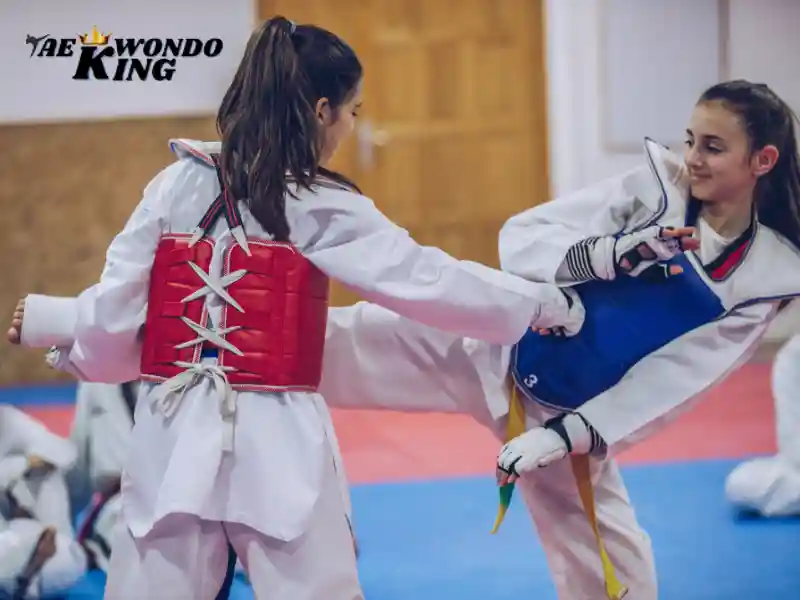
I always look forward to your posts—such valuable insights!
I like what you guys are up too. This type of clever work and reporting! Keep up the excellent works guys I’ve included you guys to our blogroll.